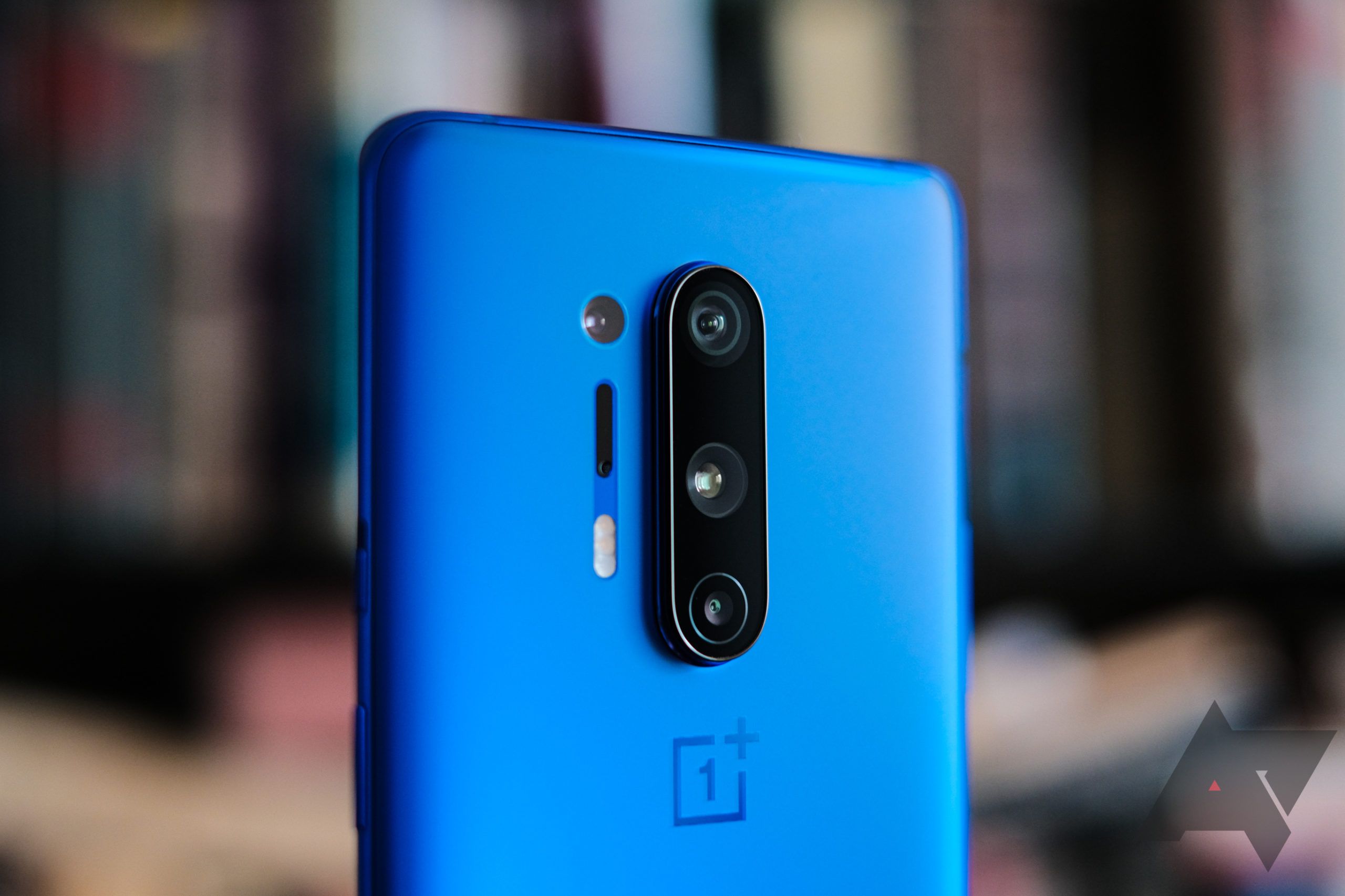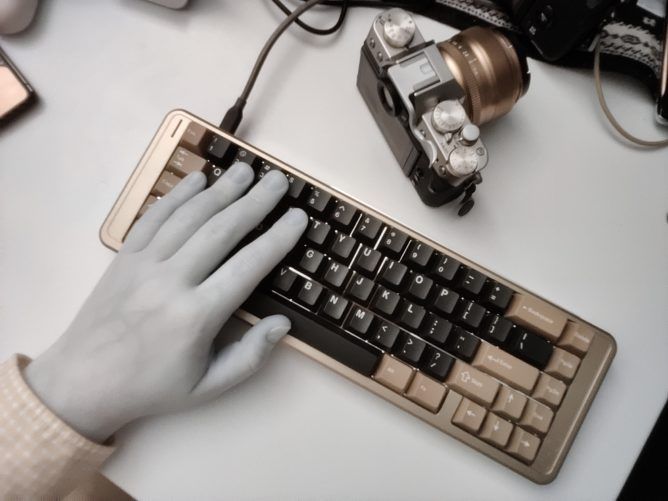The OnePlus 8 Pro delivers some considerable improvements (on paper) with its cameras compared to last year's 7 Pro and 7T. There are five imaging sensors on this behemoth of a phone, and four of those are on the back: including a wide angle, standard lens, telephoto, and "color shift" sensor, with a 48MP selfie shooter up front. How does this new system stack up? To answer that question, we've put together a gallery of examples that showcase just what the OnePlus 8 Pro can do.
If you'd just like to scroll through the photos, tap or click any of the images below to navigate through our article in gallery mode. But, we do have a few things to say about our examples. And I apologize that we don't have a wider variety — the ongoing pandemic makes getting outdoor samples difficult.
Daytime/Outdoor
OnePlus has definitely developed a characteristic processing "look" that you can pick out these days, favoring strong contrast, exaggerated colors, and aggressive HDR. That's not necessarily good or bad in itself, it comes down to your tastes, but I prefer a camera that comes closer to what I can actually see, and OnePlus' consistently misses that mark. Don't get me wrong, sometimes I like what I get from it better than what is actually in front of me, but I like a little more predictability and relative "reality" in my photos. OnePlus' look like they've already been run through an Instagram filter.
In more specific criticisms based on the images above, the OnePlus 8 Pro consistently missed the right color for red bricks on sidewalks and buildings, slightly tinting them yellow or green, or washing them out. In general, color balance was slightly off, and colors (especially brighter reds) were usually oversaturated. Scene brightness was often wrong — all these photos were taken in overcast conditions, but it consistently overexposed and faked a brighter, sunnier effect. Again, that might look better, but it's not indicative of reality.
That exaggerated contrast also seemed to crush the dynamic range just a bit. It makes images look "punchy," but you lose dark shadow detail. Excessive HDR effects are also a problem at times; in some of the outdoor images, like the one of a brick building above, you can even see a strong HDR halo. The results almost look like something from a Zillow listing.
Still, OnePlus has made great strides. Whether due to better sensors or better processing, every year brings out more detail and less of the "oil-paint" processing the company used to be known for. I still think Google's processing — which leaves more noise but preserves more detail — is a better approach, but outside low-light circumstances, I don't think OnePlus' photos look muddy anymore. Now it just comes down to taste, and a lot of people might actually prefer the pre-filtered look you get from OnePlus (though I don't).
Dim Indoor/Night
Low-light performance is a trade-off, though that's always the case. The large sensor, big aperture, and pixel binning all let the phone gather a decent amount of light. Though OnePlus' processing does get more aggressive in low-light, it can produce some pretty great results. Even on a crop, some of the photos above manage to preserve more detail than I expected to see, with less muddiness than the 7 Pro or 7T. However, that problem with overly-strong contrast is present here, too: OnePlus consistently crushes darker shadows, and I know it should be able to capture those details.
The camera on the OnePlus 8 Pro also seems to prefer cranking exposure more than it does raising ISO. I'd like if it was willing to turn up ISO just a little bit more aggressively, because handheld shots had a tendency to come out a bit blurry if I wasn't careful, even with OIS. I'd personally rather accept the trade-off of a bit more noise for a sharper photo.
As you'd expect, the front-facing camera struggles in low light, exhibiting poor dynamic range and a substantial loss of detail.
Left: Extreme low-light. Right: Same scene with Nightscape.
OnePlus' cameras still do a sort of automatic night mode when shooting photos in extreme low-light, which cranks the exposure even more and even gives you a warning to hold the camera steady. Frankly, I wish that I could turn it off, because its results are often disappointing. The other dedicated low-light Nightscape mode is still basically useless for most circumstances.
Overall, I think OnePlus has improved its low-light camera performance with the 8 Pro. I would like if it preserved more detail in shadows, rather than going for a punchy, high-contrast look, but this is still an improvement. I still personally prefer Google's Pixels at night, but you can get some good detail out of the OnePlus 8 Pro in poor lighting.
Telephoto camera
The telephoto on the Oneplus 8 Pro beats the old 7 Pro when it comes to sharpness, but I found the results washed out and hazy sometimes, and I'm not sure whether that's a software or a hardware issue. I have some telephoto results (like the weird pipe-snake-tree-thing above) that are so sharp on a crop, you might think they were taken with the primary camera at a closer distance — except for that damned haze.
Left: Primary camera. Right: Telephoto.
It's not always consistent, but when it's there, it's pretty damned annoying.
Processing with the telephoto camera also seems more aggressive, so you're more likely to notice some muddiness on fine textures when cropping. As with most other phones, in very dim lighting the telephoto/"zoom" mode switches to a crop of the primary camera, visible in the outdoor display case in the gallery sequence further above. Results are exactly what you'd expect from digital zoom in low-light: A mess.
Wide-angle camera
I find it tough to be critical of the OnePlus 8 Pro's wide-angle camera. The results are generally pretty good, if you ran accept OnePlus' fanciful processing. Outside a close crop, it's plenty sharp, distortion isn't bad, and dynamic range can be good. The overly processed look even does this wider angle view a favor, enhancing apparent sharpness with exaggerated contrast, and giving the sky unrealistic but very pretty colors. I would bet it can take some attractive nature shots.
Part of the reason it does so well is because of the sensor. OnePlus told us that the wide-angle camera in the 8 Pro uses the same high-end Sony IMX 586 sensor that the primary camera of last year's 7 Pro did. Binning from 48MP down to 12MP, it even does okay in low-light. At least, better than you'd expect, anyway. It still can't hold a candle to the primary camera, there's just too big a difference in aperture and light-gathering ability.
The wide-angle still serves double duty for macro on the 8 Pro, and it does a stellar job with great sharpness. Those individual lines carved in the glass of the OnePlus 8 you see above aren't visible to the naked eye, and the texture on my escape key above was well defined (if just slightly over-exaggerated).
Color filter camera
We're told that the color filter camera literally just does one thing right now: the "Photochrom" filter mode. That's it.
More things that use it will apparently be added later, but right now, I don't think it has much of a point, and I'm a little miffed it got put on the easy-to-wipe-clean camera hump while the telephoto didn't.
Strengths and weaknesses
I was very critical last year of how the 7T seemed to give each camera a totally different set of results, with no consistency between them. That relative consistency between cameras seems to have improved, but the overall results are still inconsistent in the more basic sense: You don't quite know what you'll get. Sometimes the camera takes surprisingly realistic photos with great processing. But most of the time, they look like someone went a bit crazy with HDR or Snapseed sliders.
One thing I did find myself appreciating more was OnePlus' "Pro" camera mode. I firmly believe that manual camera controls on smartphones are, generally speaking, a bad idea. Phones don't take or process photos in the same way your mirrorless or DSLR does, it's a very different process, and the same controls don't really apply. There's so much more going on with finely-tuned machine learning models and multi-frame HDR, you playing with ISO is more likely to break things than make them better. That said, it did help me salvage a couple of shots I wanted to get, like when shutter speed kept me from capturing the sign above.
I think that the camera on the OnePlus 8 Pro is going to be a very polarizing subject, due to its aggressive processing. The results here show that OnePlus has continued to make improvements, especially when it comes to processing fine details, but the camera definitely has a "look" to it that can be picked out of a lineup, and not everyone will like it.
For more details about the OnePlus 8 Pro, check out our review.


